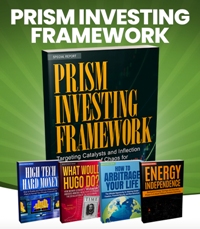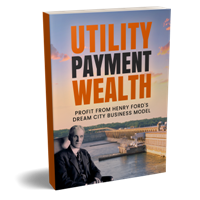 President Trump wants rate cuts. Stock market investors do too. As do home buyers.
President Trump wants rate cuts. Stock market investors do too. As do home buyers.
Their reasons are slightly different. But they all generally believe rate cuts to be the path to greater riches and glory.
Trump wants cheaper credit for several reasons. First, he wants cheaper credit so the Treasury can better finance the U.S. government’s massive $37.5 trillion pile of debt.
The 2025 fiscal year ends September 30. Through August, the federal government has run a budget deficit of $1.97 trillion. About half of this – $933 billion – was merely to cover the interest on the debt.
If interest rates were to drop by a percentage point or two the annual debt interest could fall by several hundred billion. This may buy a little time for the U.S. government’s fiscal reckoning. But it really wouldn’t change anything.
The U.S. government is on target to run a budget deficit of $2.2 trillion for FY 2025. Lower interest rates, and thus a lower net interest payment, would only reduce the deficit to around $2 trillion – a difference of just over a half percent of the total $37.5 trillion of outstanding debt. In other words, it would do exactly diddly-squat for the nation’s finances.
Trump also wants rate cuts because he thinks it will boost the economy. The big idea is that lower borrowing costs stimulate business activity. For example, a business owner may be enticed by lower interest rates to borrow money to expand operations. This could mean buying new equipment, opening a new location, or investing in new technology.
Lower interest rates can also provide a boost to consumers. Lower borrowing costs for mortgages, car loans, and credit cards mean that monthly payments go down. This leaves consumers with more disposable income to spend on other things, like dining, shopping, or taking vacations.
Virtuous Cycle
The increase in consumer spending creates more demand for goods and services. To keep up with this demand, businesses need to hire more people.
The cycle is pretty simple. When people spend more, businesses earn more. When businesses earn more, they’re more likely to hire, which in turn leads to lower unemployment rates and a larger tax base.
Lower interest rates also create a psychological boost. When people see the Federal Reserve taking action to support the economy, it can make them feel more optimistic about the future. This increase in confidence can lead to more spending and investing, which further fuels economic activity.
For businesses, this confidence can be a green light to take on new projects and greater risks. They’re more willing to hire new employees or invest in research and development when they feel good about the economy’s direction.
Economists sometimes refer to this as a virtuous cycle where lower rates lead to more borrowing and spending, which creates more jobs and boosts confidence, leading to even more spending and growth.
The virtuous cycle is a chain reaction where a positive event creates a cascade of other positive outcomes. As lower interest rates spur spending and job growth, increased consumer confidence drives even more economic activity. This self-reinforcing loop may create an upward spiral of prosperity.
Lower borrowing costs also mean more cash stays in the company, which can be used to grow the business, increase profits, raise the dividend, or buy back their own stock. These actions are all seen as positive by investors and can make a company’s stock more attractive.
Anticipation
The value of a stock is essentially the present value of all its future profits. To figure that out, analysts use a discount rate to account for the fact that a dollar tomorrow is worth less than a dollar today. The discount rate is tied to interest rates.
When interest rates are lower, the discount rate also falls. This means that a company’s future profits are worth more in today’s dollars. So, even if a company’s earnings don’t change, lower interest rates make the stock appear more valuable.
When interest rates are high, you can get a decent return by putting your money in lower risk investments like government bonds or high-yield savings accounts. But when interest rates fall, the returns on those safer investments drop. This makes the stock market look much more appealing in comparison.
Investors who are looking for a better return as interest rates fall will shift their capital from bonds to stocks. This increases demand for stocks and pushes their share prices higher.
Stocks, at the moment, are extremely overvalued. They’re riskier than they were in August of 1929 and March of 2000. But that doesn’t mean they won’t become even riskier.
Investors are currently geeking out over the Fed’s forthcoming rate cut following next week’s Federal Open Market Committee (FOMC) meeting. They’re pushing stocks higher in anticipation.
As investors flock to stocks seeking higher returns, the increased demand drives prices higher, creating a self-fulfilling prophecy.
So, with all the virtues of lower interest rates, why not just set them at zero?
The Unvirtuous Cycle of Rate Cuts
John Locke tackled this question over 330 years ago. If you missed it, he penned a still relevant essay in 1691 called “Some Considerations of the Consequences of the Lowering of Interest, and Raising the Value of Money.”
Locke was intensely focused on interest rates. During his time, there was a push to lower the legal interest rate, much like the Fed lowers rates today, to try and stimulate the economy.
Locke cautioned against this. He argued that the interest rate isn’t just an arbitrary number the government can impose. Instead, it’s a direct reflection of the value of money itself.
For example, when you lend money, you’re giving up the ability to use that money for a period of time. So, the interest you charge is like rent for that temporary use of your capital.
When the government artificially lowers this rate, it distorts the market. By pumping money and credit central bankers drive up prices of consumer goods, property, stocks, and everything else.
Locke understood that the value of money isn’t fixed like the weight of a physical object. Its value is dynamic and tied to both the supply and demand of money and the productivity of trade.
If there’s a large amount of money in circulation (high supply) and not much demand for it, its value tends to decrease. That’s often a recipe for inflation. Conversely, if money is scarce, its value increases.
For Locke, the true wealth of a nation wasn’t simply measured by its money reserves, but by its productive capacity – its ability to create goods and services and engage in trade. Money, in his view, was primarily a tool to facilitate this exchange. When you interfere with this tool – by manipulating interest rates or the perceived value of money – you risk disrupting the entire economic engine.
Moreover, attempting to correct the trade imbalances caused by manipulating interest rates on the back end, like Trump is trying to do with his import tariffs, doesn’t solve the problem. Rather, it further disrupts the economic engine and limits the ability to create goods and services and engage in trade.
As Locke discerned, economic forces are incredibly powerful. You can’t simply legislate them away or ignore them.
Trying to artificially control things like interest rates without understanding the underlying economic realities leads to an unvirtuous cycle full of unintended, and often unpleasant, consequences. Over the last 112 years this has resulted in a steadily declining dollar and massive debt and deficits.
This week gold, in anticipation of further dollar devaluation, exceeded $3,600 per ounce. Yet there’s still more to come…
The professional schemers in Congress and at the Fed have a steady supply of dollar devaluation tricks up their sleeve. And as the dollar loses value, the dollar price of gold will continue to rise in kind.
[Editor’s note: Unlock a resilient portfolio. Discover why gold thrives in market downturns, and how small investments can lead to big returns. Get your free gold investment guide today!]
Sincerely,
MN Gordon
for Economic Prism
Return from The Unvirtuous Cycle of Fed Rate Cuts to Economic Prism





We have all witnessed what lowering interest rates do. It creates massive inequality where the Rich who have access to cheap rates get Richer, while the working class loses by the devaluation of the currency. Wages never keep up with inflation so the middle class falls into the poor class. Governments spend more, adding more debt which has to be paid by rising taxes. And how will lower interest rates help the home buyer? All it causes is for housing prices to rise as the Investors pile into the market.